The Vietnam Commodity Exchange (MXV) said selling pressure dominated the world's raw material market in the context of the US releasing a series of important economic data this week.
Closing, the MXV-Index decreased more than 0.7% to 2,196 points - extending the decline to the second session.
Notably, the prices of 4 out of 5 energy commodities were in the red, of which two crude oil commodities plunged by nearly 3%. In addition, a cautious sentiment also covered the metal market.
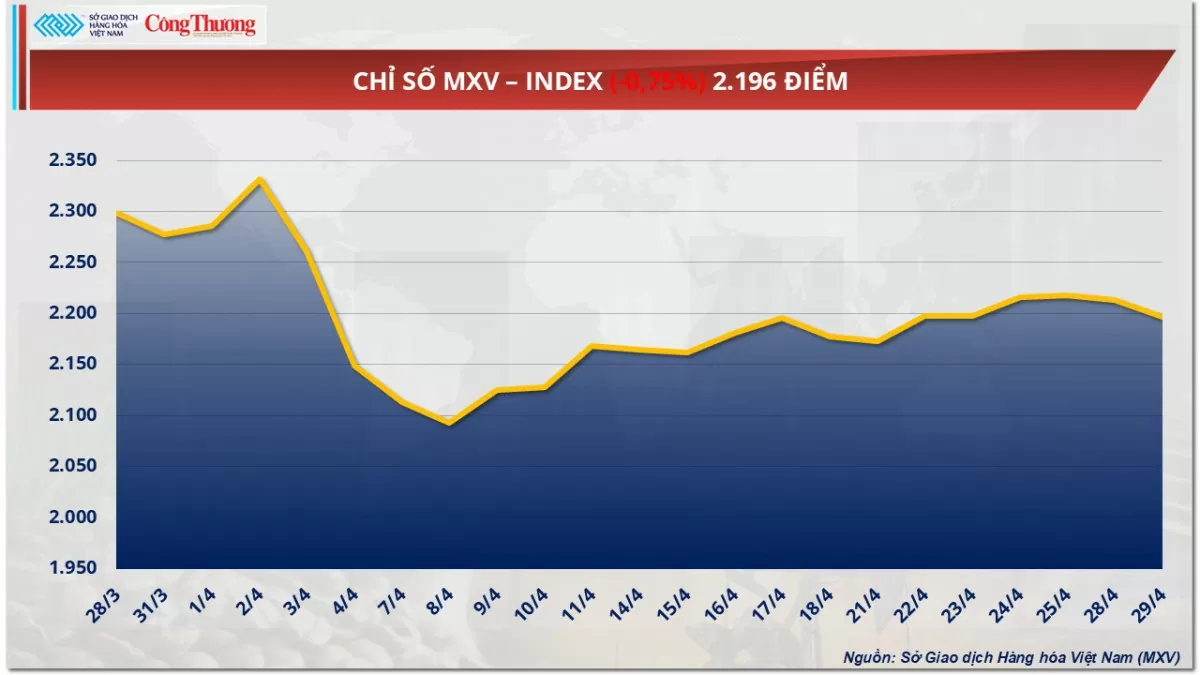 |
| MXV-Index |
Crude oil prices fall to two-week low
According to MXV, world oil prices suddenly dropped nearly 3%, falling to their lowest level in more than two weeks, as market sentiment was pressured by growing concerns about the risk of global oversupply.
At the end of the trading session, Brent crude oil price stopped at 63.98 USD/barrel, down 2.85%. At the same time, WTI crude oil price also lost 2.63%, down to 60.42 USD/barrel. Both commodities are at their lowest price since March 10.
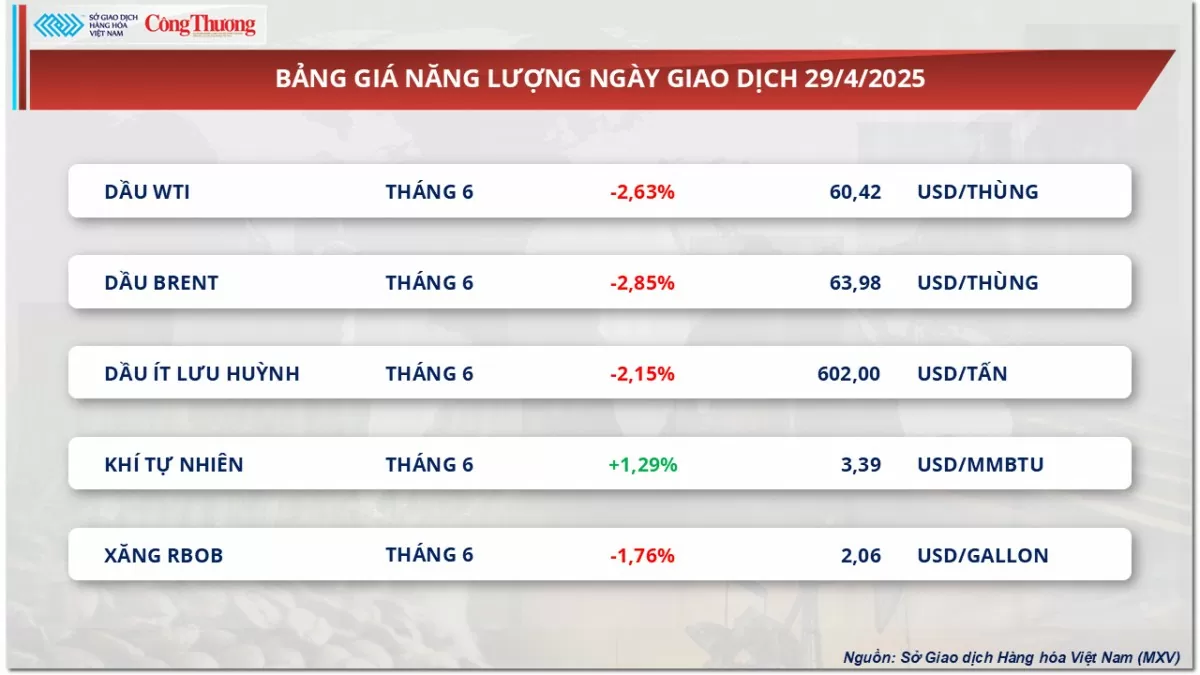 |
| Energy price list |
The oil market is still being affected by speculations about the possibility of OPEC+ increasing production in June. The final decision on this issue is expected to be made after a meeting of eight member countries on May 5. In the current context, the fact that some member countries continue to produce more than the quota set by OPEC+ has further increased concerns about the risk of oversupply in the market.
Although OPEC+ has received plans to cut excess production from seven member countries, notably Iraq and Kazakhstan, the reality shows that the situation of exceeding quotas still continues.
Kazakhstan's oil exports in the first quarter of 2025 increased by 7% compared to the same period last year thanks to increased supply via the Caspian pipeline, according to Reuters estimates.
According to analysis by Mr. Ole Hansen, an expert from Saxo Bank, another production increase from OPEC+ will come at an extremely unfavorable time when market sentiment is already fragile, especially in the context of Kazakhstan's lack of interest in cutting production.
This view was reinforced when Kazakhstan's Energy Minister Erlan Akkenzhenov affirmed on April 23 that the country would prioritize national interests when adjusting oil production, instead of strictly adhering to OPEC+ cut commitments.
In addition, the American Petroleum Institute (API) also just announced its estimate of US crude oil reserves on April 29. According to the report, at the end of the trading week on April 25, US crude oil reserves increased sharply by 3.76 million barrels, much higher than the increase of about 400,000 barrels given in many predictions and in contrast to the decrease of about 4.57 million barrels in the previous week.
Today, the market continues to wait for official data from the US Energy Information Administration (EIA) on crude oil and other energy product inventories.
On the other hand, in addition to information about the risk of a sharp increase in global supply, factors related to oil demand also contribute to pressure on prices.
Investors are now preparing for a busy week with a series of US economic data being released, including the US Federal Reserve's (FED) preferred inflation index - the PCE price index, the non -farm payrolls report and the first quarter gross domestic product (GDP). According to MXV, after this information is released, commodity prices in general and energy prices in particular will continue to fluctuate strongly.
Metal market volatility
At the end of the trading session, silver prices reversed to increase by 0.77% to 33.58 USD/ounce, while platinum decreased by 0.97% to 985.5 USD/ounce.
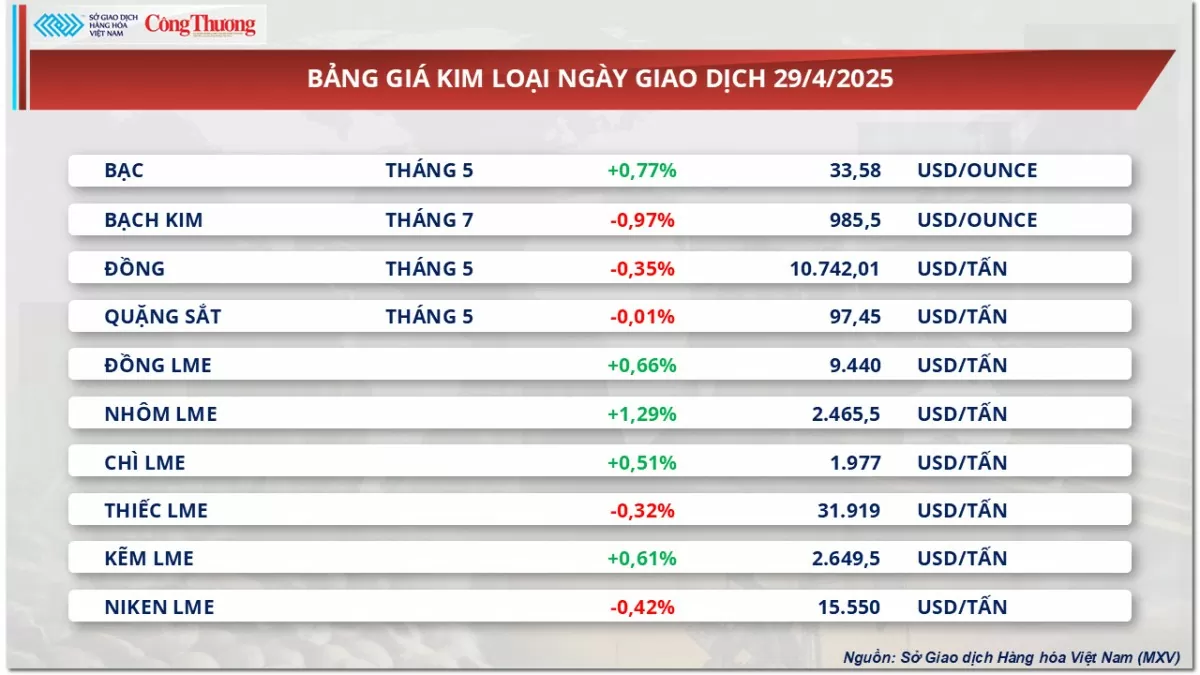 |
| Metal price list |
Silver’s dual role as a precious metal and an industrial raw material has benefited from the strengthening of manufacturing activity, which supported silver prices yesterday.
For the base metals group, COMEX copper prices continued to decrease by 0.35%, falling back to $10,742/ton. Meanwhile, iron ore prices fluctuated slightly, continuing to trade around $97.45/ton.
According to foreign sources, China's manufacturing activity is likely to weaken in April, leading to a less positive outlook for consumption of industrial metals such as copper and iron ore. Specifically, the purchasing managers' index (PMI) for the manufacturing sector is forecast to fall from 50.2 points to 49.8 points in April.
Meanwhile, iron ore prices remain under pressure as many countries step up protection measures for their domestic steel industries, increasing the risk of oversupply in the global market. Notably, although the current safeguard measures of the European Union (EU) are scheduled to expire in June 2026, the European Commission is considering implementing a new trade defense mechanism to more closely control import flows. Experts warn that by adjusting the method of calculating dumping margins, the EU could apply higher anti-dumping duties and, in particular, could conduct investigations without waiting for actual damage to occur.
Source: https://congthuong.vn/gia-bac-dao-chieu-tang-077-len-muc-3358-usdounce-385585.html


![[Photo] Prime Minister Pham Minh Chinh chairs a meeting on the implementation of the Lao Cai-Hanoi-Hai Phong railway project.](https://vphoto.vietnam.vn/thumb/1200x675/vietnam/resource/IMAGE/2025/5/20/0fa4c9864f63456ebc0eb504c09c7e26)









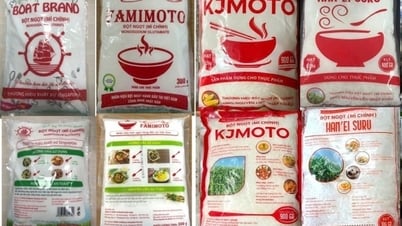





























































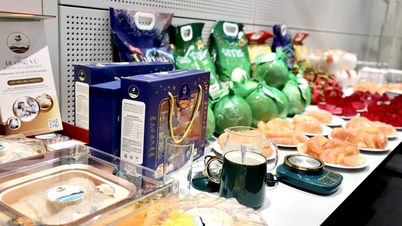








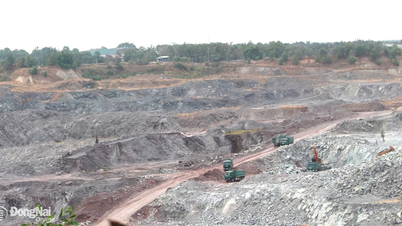












Comment (0)